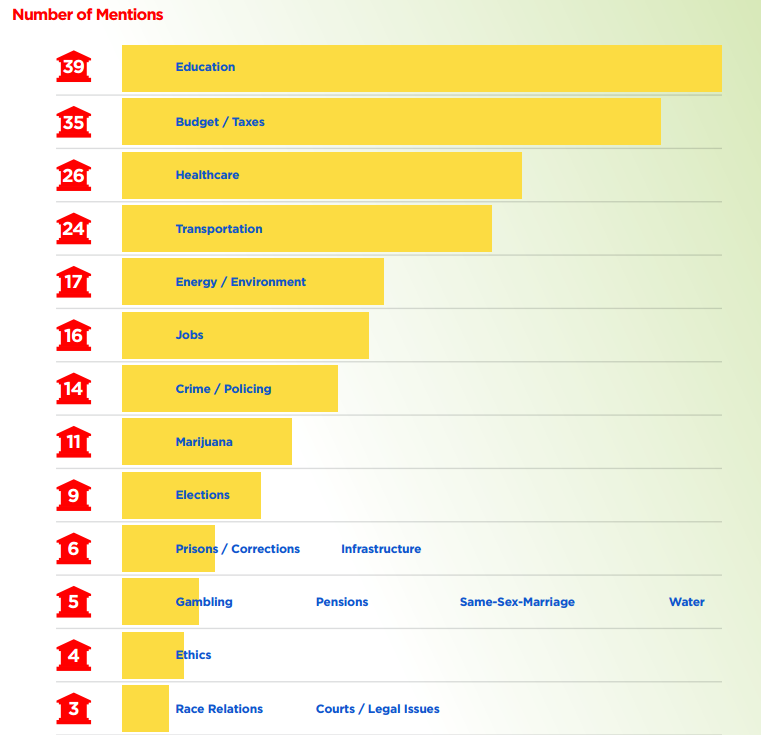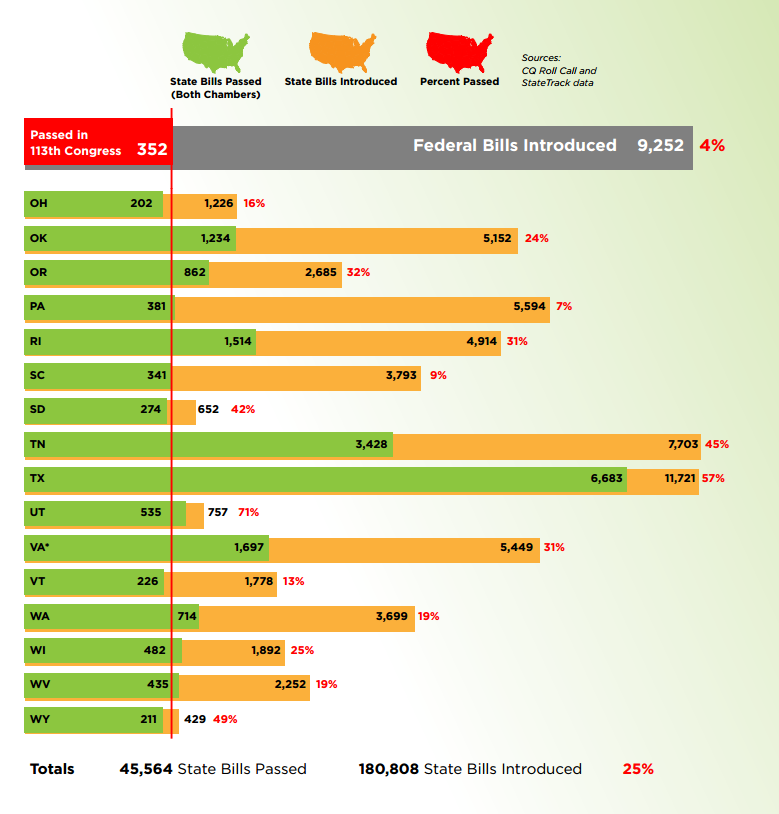Congressional Quarterly, a publishing company specializing primarily in U.S. Congressional reporting, has released their second annual 50 State Project. The Project highlights differences in bill passage between the U.S. Congress and statehouses around the nation. Additionally included in the report are the top issues in the states and in the U.S. Congress, as ranked by reporters in their respective localities.
Congressional Quarterly claims that the federal government is simply unable or unwilling to address big problems, as evidenced by the fact that multi-year funding bills keep staggering along on short-term extensions passed yearly or even monthly. Furthermore, CQ highlights the long-term effects of the Great Recession. While their used to be a steady stream of revenue from the nineties up through 2008, legislatures today are still forced to make tough funding decisions with very limited state incomes. This is evident in the rankings, as budget/taxes are ranked as a high issue.
According to a survey of reporters covering statehouses, the top three issues in state legislatures nationwide are education, budget/taxes, and healthcare. Additionally, transportation, jobs and the environment were also frequently cited by reporters as being top issues.

The top issues cited by Wisconsin reporters were K – 12 education, jobs, transportation, higher education and legal issues.
Additionally, the report highlights differences in bill passage statistics between the U.S. Congress and the states. According to CQ, the 113th Congress, in session January 3, 2013 – January 3, 2015, introduced 9,252 bills, but passed only 352. This equates to a four percent passage rate. During that same time, Wisconsin lawmakers introduced 1,892 bills and passed 482, a 25 percent passage rate. The state with the highest passage rate was Maine with 89% passage and the state with the lowest was South Carolina with nine percent. In total, states introduced 180,808 bills and passed 45,564, a 25 percent passage rate. Most state legislatures were each able to pass more bills than the U.S. Congress while usually introducing far fewer.
